The ancient Odeon of Herodes Atticus is under the protection of Athena, Dionysus, Zeus and Elton John. The first three – in their respective roles as patron deities of Athens, drama and the entire Hellenic world – have looked after this still spectacular theater at the foot of the Acropolis since its construction in 161 AD; Elton (in his role as god of funny specs?) has been doing his part, together with Placido Domingo, Sting and others, by giving concerts there since 2000. Millennia-old, marble-made open-air theaters need some extra attention and maintenance apparently, so the money raised will come in handy; Zeus, despite all his “protection,” seems to have lost his checkbook over the past few thousand years.
Like that mix of the ancient, divine and Rocket man modern bothers you, then you have probably avoided the current television program: Percy Jackson and the Olympians – the Croesus-budgeted Disney+ adaptation of Rick Riordan’s countless sold children’s books – which concludes its first season tonight. In it, 12-year-old New Yorker Percy (short for Perseus) discovers he is the son of Poseidon, fights a minotaur, retrieves the Golden Fleece and… actually, if I’m honest, I stopped listening to my nine-year-old …Old’s continued explanation of the plots sometime after the first few months of his obsession. But I’d take him and his almost equally enthusiastic 11-year-old brother to Crete (birthplace of Zeus, home of the original Minotaur) and Athens (birthplace of Dionysus, home to some excellent seafood restaurants; well, who says should all be about the children?).
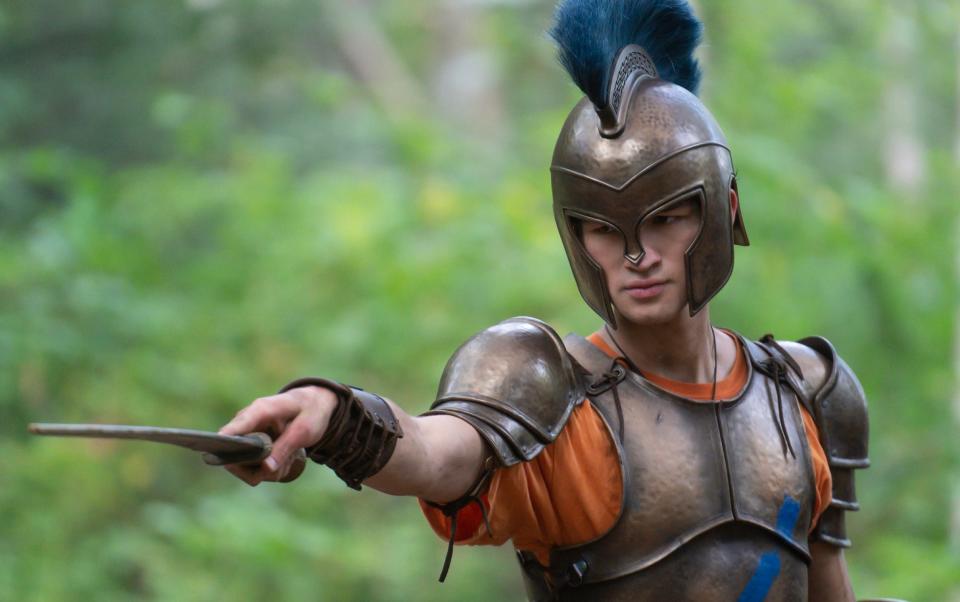

Afraid that their enthusiasm for Greek mythology might melt away like the wings of Icarus once confronted with a load of ancient stones and a bunch of museums, I embark on a kid-friendly Percy Jackson-themed tour from a company that specializes in it (greekmythologytours.com ). Despite her degrees in Ancient Greek and archaeology, our guide Eva is anything but a stuffy purist: she draws my boys along with her television presenter’s energy level and a real enthusiasm for the books (their version of the gods and goddesses, she tells me out of earshot, are “ very little changed from the original stories – they just say ‘dating’ instead of ‘rape’”).
She also brings an iPad for each child, packed with augmented reality software that overlays interactive elements wherever they point the camera. But such modern magic is not necessary: as our group reaches the high plateau of the Acropolis through the colossal, divine Propylaea gates, all eyes widen and all hairs stand on end at least a little.
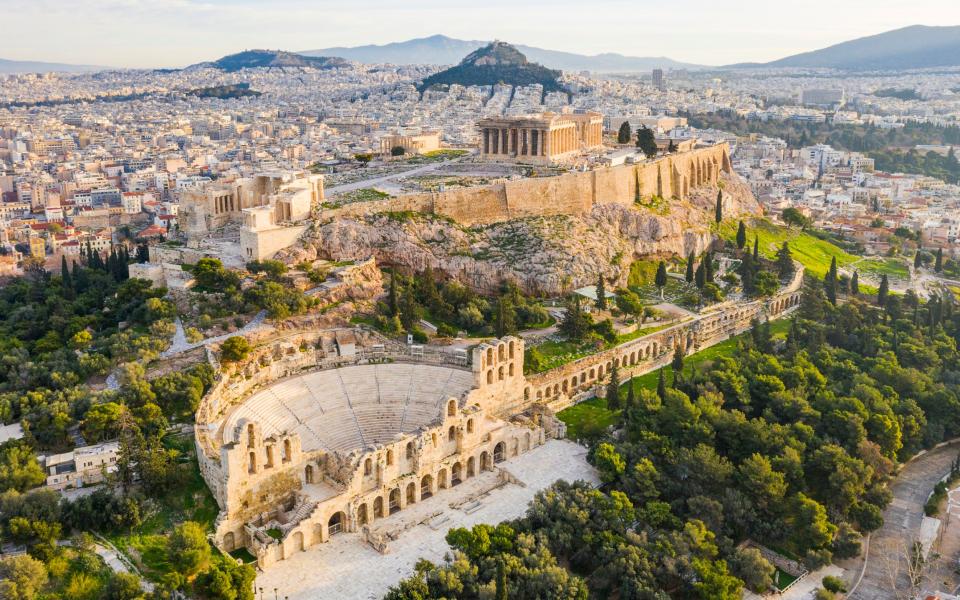

The incidental music in our heads swells excitingly, and then there is a cinematic moment that any director would be proud of: the October autumn sun cutting between the columns of the roofless Parthenon.
Even the children gasp a little at this first sight – I don’t know if it’s the age, the stories woven around it or the pure aesthetic, a timeless algebra of perfect proportions – and then (another classic trick from the cameraman’s handbook) we can tell them that that is simply the only thing back door they are looking at, and we turn to the large front porch.
Eva blows the mind a little further with a description of the 40-foot gold-and-ivory statue of Athena that once stood here, and gracefully waves away our very British grimacing half-smile of mournful apology when discussing That missing marbles, and points out the most pleasing bits in the Acropolis Museum (an ancient public latrine for eight men, and the comic book punch of the Centauromachy friezes – all bulging marble muscle and weapons crunching graphically into flesh).
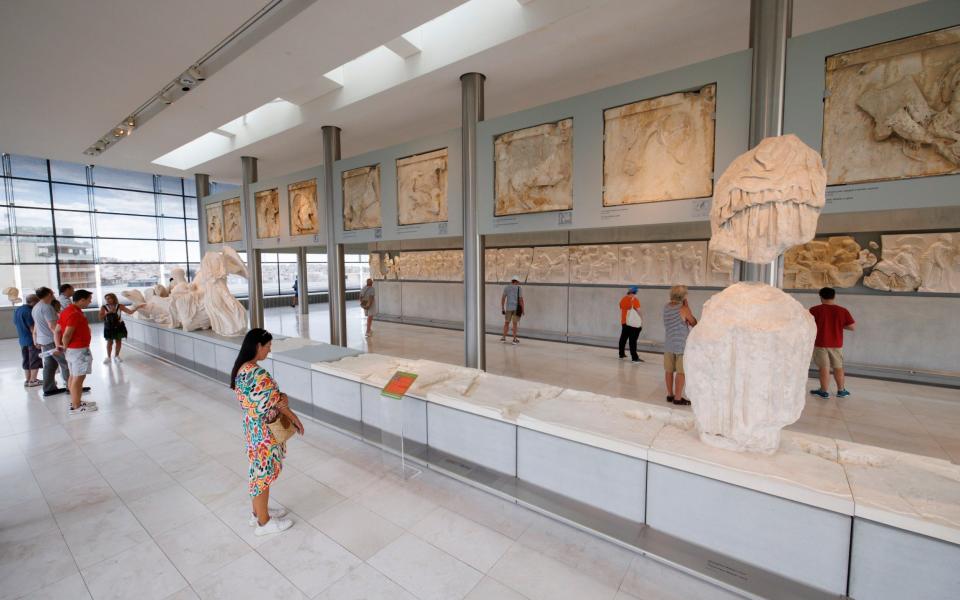

The next day we arrive at a few more thousand years: the magisterial Temple of Olympian Zeus (which took 600 years to build), the Temple of Hephaestus (the interior and altar are still impressively intact) and the Panathenaic Stadium, where the original Olympians competed naked in athletics. (“What do you think the winner’s prize was?” I asked my boys, having just learned that it was an olive oil amphora. “Clothes?” the 11-year-old guessed.)
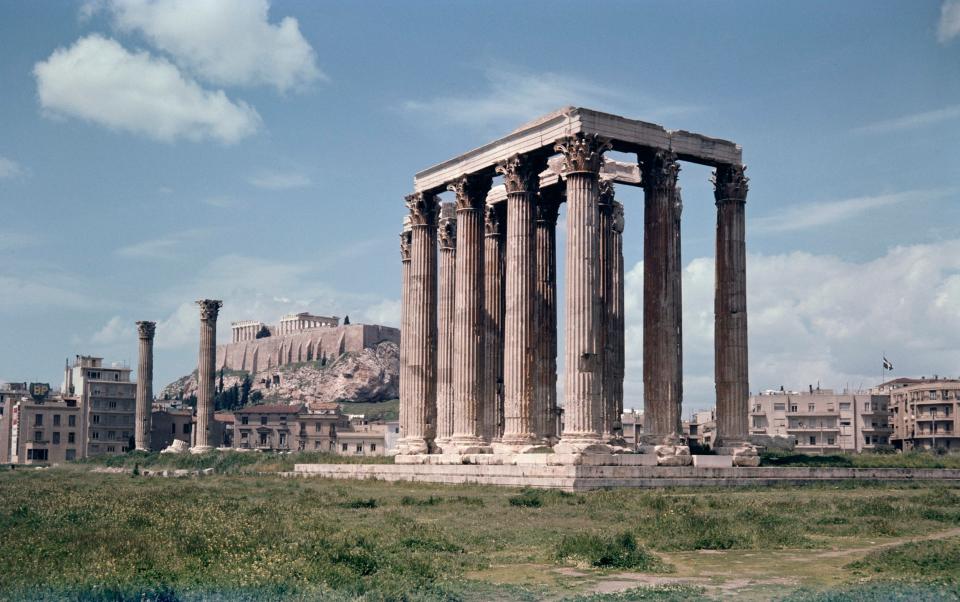

He is similarly baffled at Sounion, a few miles outside Athens, and the place where Aegeus committed suicide when his son Theseus returned from killing the minotaur, but forgot to hoist the white sails that would have signaled victory. We both draw a lesson from the story, but while mine is, “Sons should listen to what their fathers tell them,” I fear his is, “Theseus should have WhatsApped.”
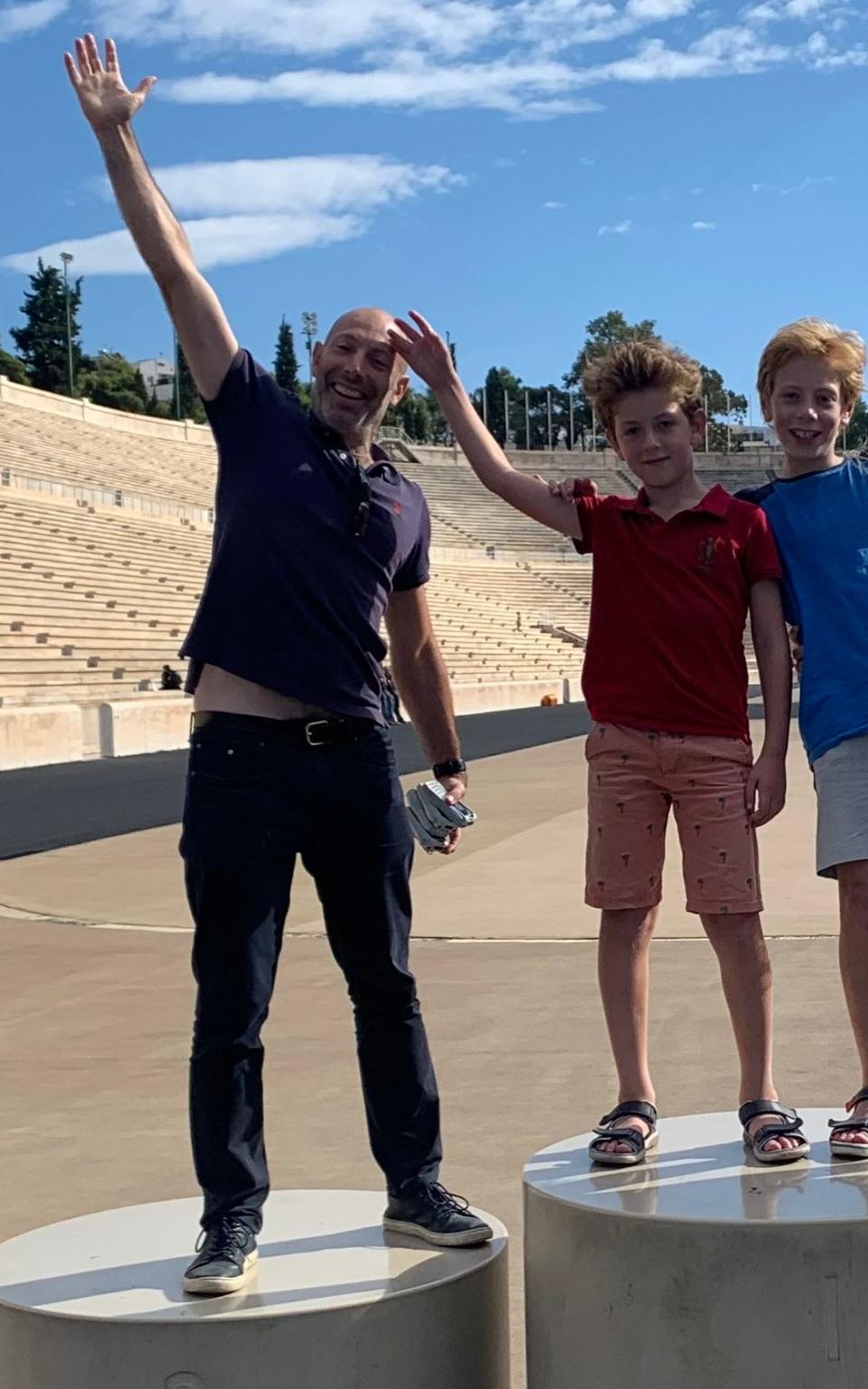

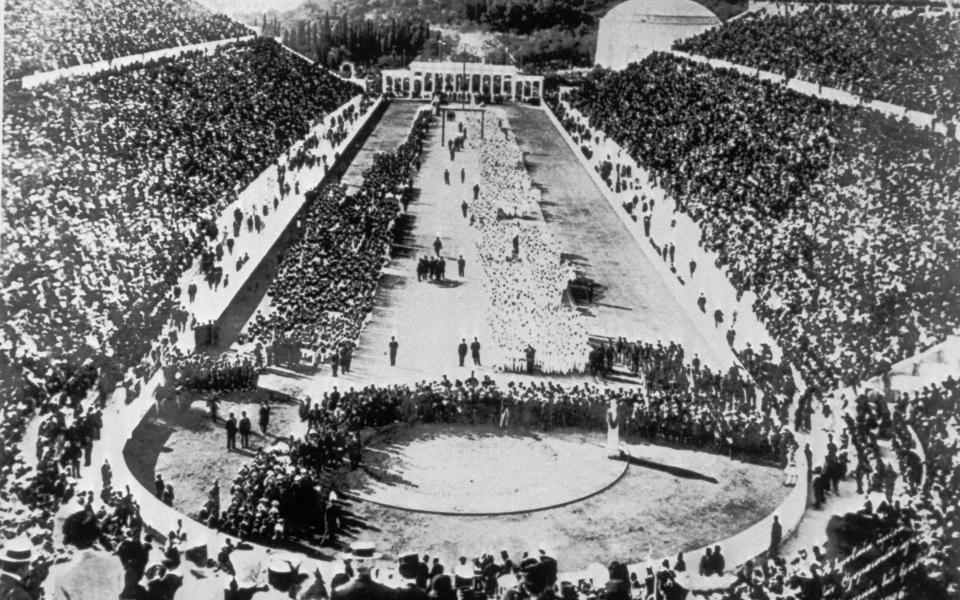

But once the sun starts to set, it’s impossible not to feel the numinous magic of the place. The honey-colored Pentelic marble of Poseidon’s temple seems to absorb the rosy glow of the sky, pale at sunset by amber and peach before settling into translucent moonlight white. At the foot of those deadly cliffs lies the Aegean Sea itself, a shimmering infinity of blue, the first islands beckoning from the misty distance – and we listen to their siren song (and that of the all-day ice cream parlour) on to Crete to go the next day, and the Cretan Malia Park resort.
This would be the kid-friendly, sun-sea-and-pizza-in-the-hotel-buffet part of the holiday. (In Athens, we stayed at the sophisticated New Hotel in the bustling Plaka district.) But basically Cretan Malia does all that family-friendly stuff while still feeling like a lovely little Greek island village. Rooms, pools and restaurants are spread throughout the lovely Homeric gardens that stretch down to a Demerara sugar beach, and the air is perfumed with oleander, tamarisk and pomegranate trees. We paddleboard in temple-calm water; I get a massage with fig and olive oil massage oil, which makes me smell so good that I can barely resist licking my arms; and we tuck into every meal like Dionysus himself: homemade honey and thyme yogurt for breakfast, and garlic-spiced lamb slowly roasted over an open fire for dinner.
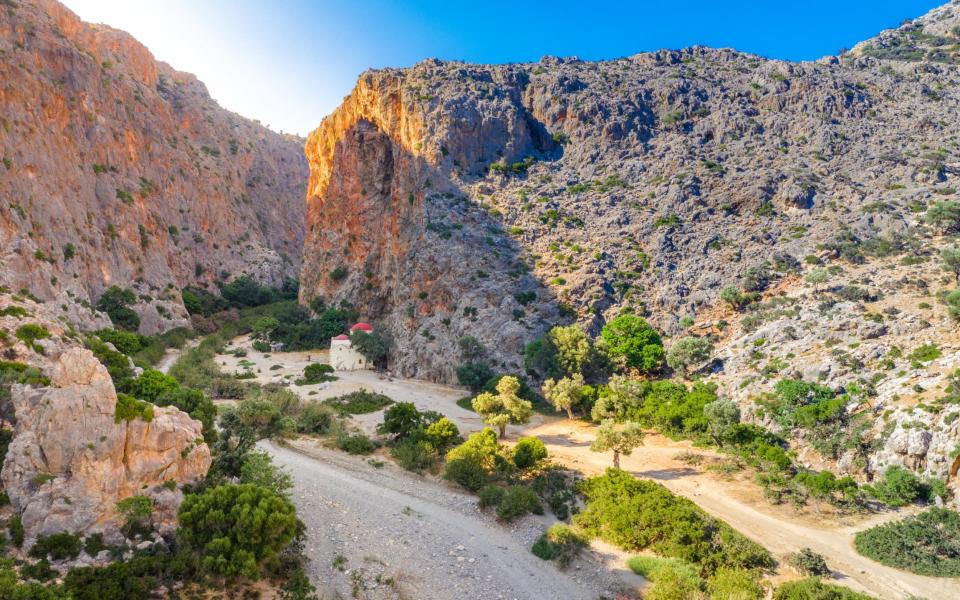

I love the relaxed bar and authentic restaurants; my boys swoon for movie nights and milkshakes in the hammock-stretched open-air cinema. But not every child is so lucky. With the help of another brilliant specialist operator (kidslovegreece.com) one day we make the 40 minute drive to the Cave of Zeus: the supposed birthplace and nursery of the father of the gods, but a soft play area that is not. A staircase of Orphean length and steepness is a complete Hades of thunderously grandiose power rock pillars where stalactites meet stalagmites to create a natural version of a temple’s columns, mighty enough to hold up the roof of the earth itself.
Stalactites grow only 1 centimeter per century, our guide explains, and because some here are over 20 meters high, they easily predate humans. The nine-year-old’s jaw visibly relaxes.
A local mini-myth claims that Crete’s ubiquitous soundtrack of jingling goat bells was created to hide Baby Zeus’ location from his father, who wanted to kill him (we’ve all been there, right, dads?). That seems strange until our guide leads us through the Gorge of Saints the next day, where the high walls of a dry valley amplify the ringing until it is almost deafening. We walk, we climb, we abseil, we poke our noses into a small 14th-century church where the air is heavy with incense and the presence of those sad Greek Orthodox icons – and then suddenly the gorge opens up in widescreen, a perfect pebble beach and the Libyan Sea that glitters like golden roses shaken from the shoulders of the sun god Apollo.
It’s absolutely Elysian, a location scout’s dream… and that’s more than can be said for Knossos, in northern Crete, which we visit on our last day. You’d need a lot of CGI to recreate the Minotaur’s labyrinth from the tumble of ancient stone here – although you might as well not bother, according to our guide. The “maze” of the legend simply refers to the vast number of rooms that the palace/warehouse/temple complex contained, she says, pointing to repeated symbols carved into the rock to mark the different functional areas, such as the different aisles in a supermarket. When you think about it like that, it’s not that magical, but my boys love looking for the “secret” signs: a double-headed Minoan ax delicately carved next to a doorway here, and a trident hanging there at the base of a passage is etched.
So it turns out – schmaltzy Hollywood ending warning – that it is imagination rather than ingenious effects that bring the Percy Jackson stories and Greek myths to life for my children. Too cute? Don’t worry, they are not open to using what they have learned for nefarious purposes. Late in the afternoon, the 11-year-old asks for something “authentically ancient Greek” to eat, and I’m happy – until earlier in the day he quotes our guide’s commentary about the custom of fifth-century Athenians BC to mix honey with snow from the mountains. He is looking for ice cream, so he goes back to the resort’s ice cream tent. Never underestimate the inspiring, educational power of soft-scope and television.
Essentials
Ed Grenby was a guest at the New Hotel in Athens (yeshotelsgr/newhotel), which offers double rooms from £148, rooms only; Cretan Malia Park (cretanmaliapark.gr) which offers triples from £136, including breakfast; Greek Mythology Tours (greekmythologytours.com); and Kids Love Greece (kidslovegreece.com). Several airlines fly to Crete and Athens, and there are plenty of flights and ferries between the two (try aegeanair.com or minoan.gr), so an ‘open-jaw’ trip can be easily put together.